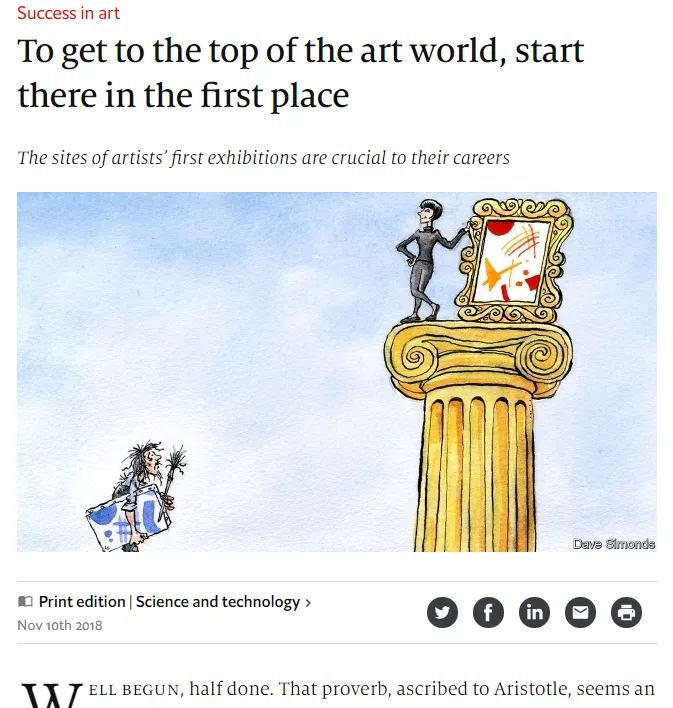In a previous post I compared the steem community with a virtual country, with about the same population as Iceland. I therefore called this Steemland, a country whose currency is STEEM (in an analogy with the Icelandic Krona, ISK).

One of the latest additions to Iceland's exports is ... Bitcoin, thanks to plentiful geothermal energy as illustrated by the geothermal power plant right. Photograph: Javier Larrea/Getty Images/age fotostock RM
The purpose of the comparison was to explore economic mechanisms through which the value of Steemland's currency would increase with respect to "a basket of other currencies" (such as the US dollar, the euro, the yen, etc). Typically, that involves Steemland offering specific, unique goods and services which can only be bought with STEEM (or SBD) and also offer incentives for keeping the STEEM for as long as possible inside the Steemland's economy.
To picture that in analogy with Iceland, think that building those Bitcoin farms in Iceland has involved paying salaries to the workers in Icelandic Krona (ISK), paying electricity prices in ISK, paying taxes to the Icelandic government in ISK. All this new economic activity (stimulated by abundant low-price electricity) have been sources of increasing demand for ISK.
Currently Steemland's main "exports" are:
- the eyeballs and attention of people coming to read and interact on Steemit, Busy, Steempeak, etc.
- the entertainment value offered by Steemmonsters, Magic Dice, Drug Wars
That is objectively not a lot, but there is a lot of untapped potential, as illustrated by the payment capabilities of an infrastructure sporting
- zero-fee transactions, 3 seconds blocks and a quasi-stable coin (SBD)
- blocks where significant amounts of structured data can be stored in support of, for instance, notarization or crazier things such as storing warranties of electronics
In this post, I'll detail yet another idea: selling art through a steem-powered platform. Such a platform, if it came to be developed, could hugely benefit artists, art-lovers and the steem community as a whole.
The Art Market
I'm far from being an expert but with an outsider view, the art market seems very lopsided, inefficient and ripe for disruption. Art, especially graphic art, is hard to value because its "utility" is very subjective - a painting one person likes can very well seem awful to another person. A recent article from The Economist summed it up nicely: "To get to the top of the art world, start there in the first place"
The conclusion is that the hierarchy in the world of art is self-perpetuating and the most prestigious galleries have a stranglehold on the path to artistic success - if an artist was being endorsed by a top gallery early on, he is very likely to enjoy success throughout his career. Conversely, it is very difficult for someone who didn't start by exhibiting in the top galleries to ever raise to artistic prominence. In other words, because of the subjectivity involved in judgement, the "middlemen" make or break artistic careers. The trade tends to become a "winner takes all" and
The result of all this is:
- white, empty walls in our homes, walls which could have been graced by beautiful paintings
- talented artists who cannot live off their art and have to abandon an artistic career: "Of those who started at the bottom of the success scale, only 14% remained in the industry ten years after their fifth exhibit." (The Economist)
Hereafter I'll present two reasons why a blockchain-based system such as steem could give a boost to the art market and serve both aspiring artists who are not lucky enough to catch the eye of Larry Gagosian, and ordinary people who would like to buy a nice painting but have no idea whether they are overpaying for it or not:
- steem can, of course, like any other web site, show the works of an obscure yet talented Indian (or Luxembourgish) painter to the whole world. However, on steem you can easily implement an eBay like art auction application (without eBay's fees) leveraging the escrow feature of the blockchain (the STEEM/SBD is not released until the painting reaches the buyer), and the delivery can also be tracked on the blockchain!
- still that is not the most innovative part in my opinion: the question of the "fair price" remains. Here steem is unique. As time and the artists's effort are two of the most valuable inputs, a fair price needs to take those into account, especially since the third ingredient, creativity, is subjective and hard to pin down. Steem allows artists to start recording their beginning to work on a piece, then record the number of hours that went into creating a given piece and thus offer a credible basis for the asking price.
Blockchain as a web-based auction house
Take for instance the exhibition at the gallery of my bank (the BIL). All the photographs were taken by me with the phone.
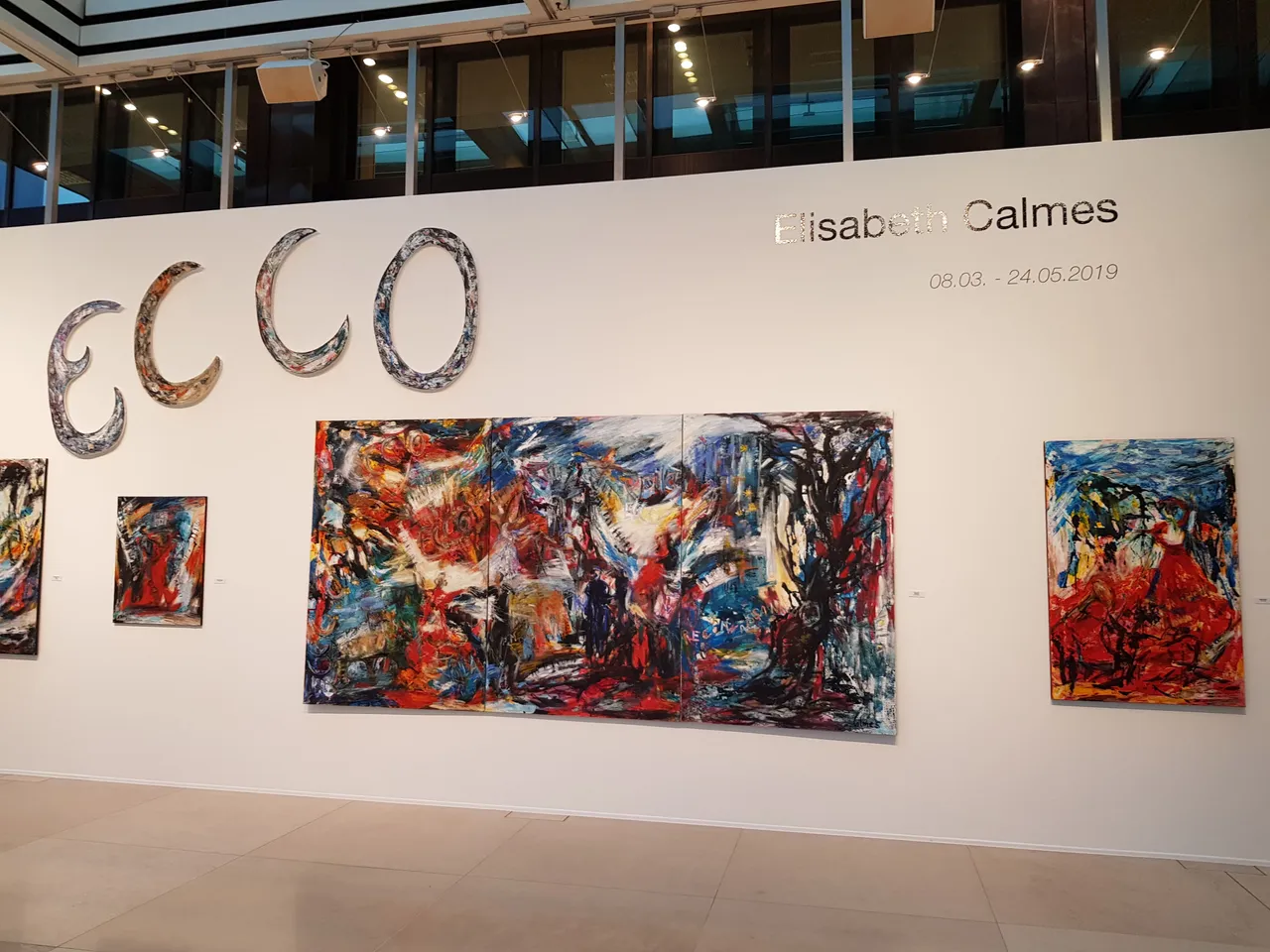
Ecco 1-2-3 (tryptique) - what do you estimate the price of this big 3 pieces of 130 x 195cm each (in the center of the photo) to be? Try a guess in the "Comments" section
Could Elisabeth Calmes potentially sell more paintings in a shorter amount of time if her work was more widely seen? I tend to say "Yes, she would".
Is art too "noble" to sell through "vulgar" web auctions? Successful artists will certainly answer "yes", but what about those who are talented and show promise but fail to make a living from their art and have to abandon their career? And what about all those empty walls which cannot afford (or are not sure they are not overpaying) a work by a successful painter but would gladly pay for one by someone less famous, if they could be reassured that the price is fair?
Not to mention that for "not too-expensive" artwork one might very well get all the information needed for a buying decision from assessing a high-quality photograph, without having to get in physical proximity to the actual canvas. Here the reach of a "web exhibition" would be really welcome.
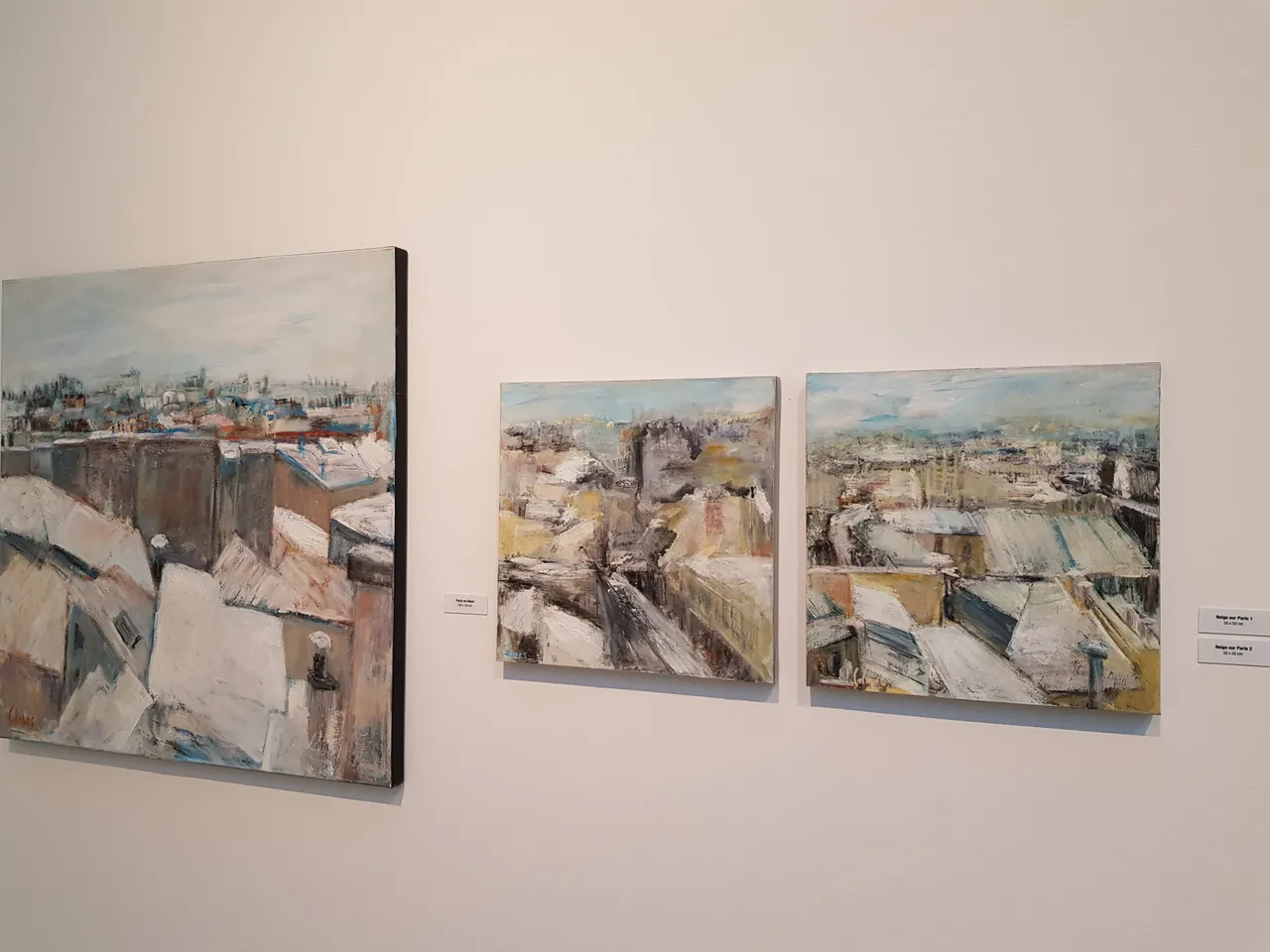
"Neige sur Paris" 1 and 2 are the smaller ones to the right, "Paris en blanc" the larger one to the left. Guesstimates of their prices are encouraged in the "Comments" section
But a blockchain-based art-auction app would bring more than just that. First, the possibility to escrow prices directly, in a transparent and verifiable manner, especially when the internal token is used (here SBD for more price stability).
Unlike eBay, which has a vested interest in siding with the vendors and encouraging sales (because it lives off the commissions on sales) the blockchain can be truly even-handed because it doesn't need to exact transaction fees.
It can also implement tracking of the ownership transfer, through a partnership with a transporter (still hard to pull off at this point in time). This way, the UPS delivery man taking signature from the buyer that the latter has received the carefully wrapped parcel with the painting in perfect shape could automatically trigger the release from escrow of the SBD to the artist.
Blockchain for fair price discovery, trust and transparency
But the part that I feel most excited about is elsewhere. Indeed, all of the above is just logistics. The real question is: how to encourage more transactions - for the benefit of both artists and art lovers - in the first place?
It is well proven that "efficient price discovery" and transparency in price formation are huge boosters of commercial activity. When both buyers and sellers acquire a feeling that the deal on offer is fair, more deals are done.
But art is unique, so how can one know whether a price of 100€, 1000€ or 10000€ is "cheap", "expensive" or "fair"?
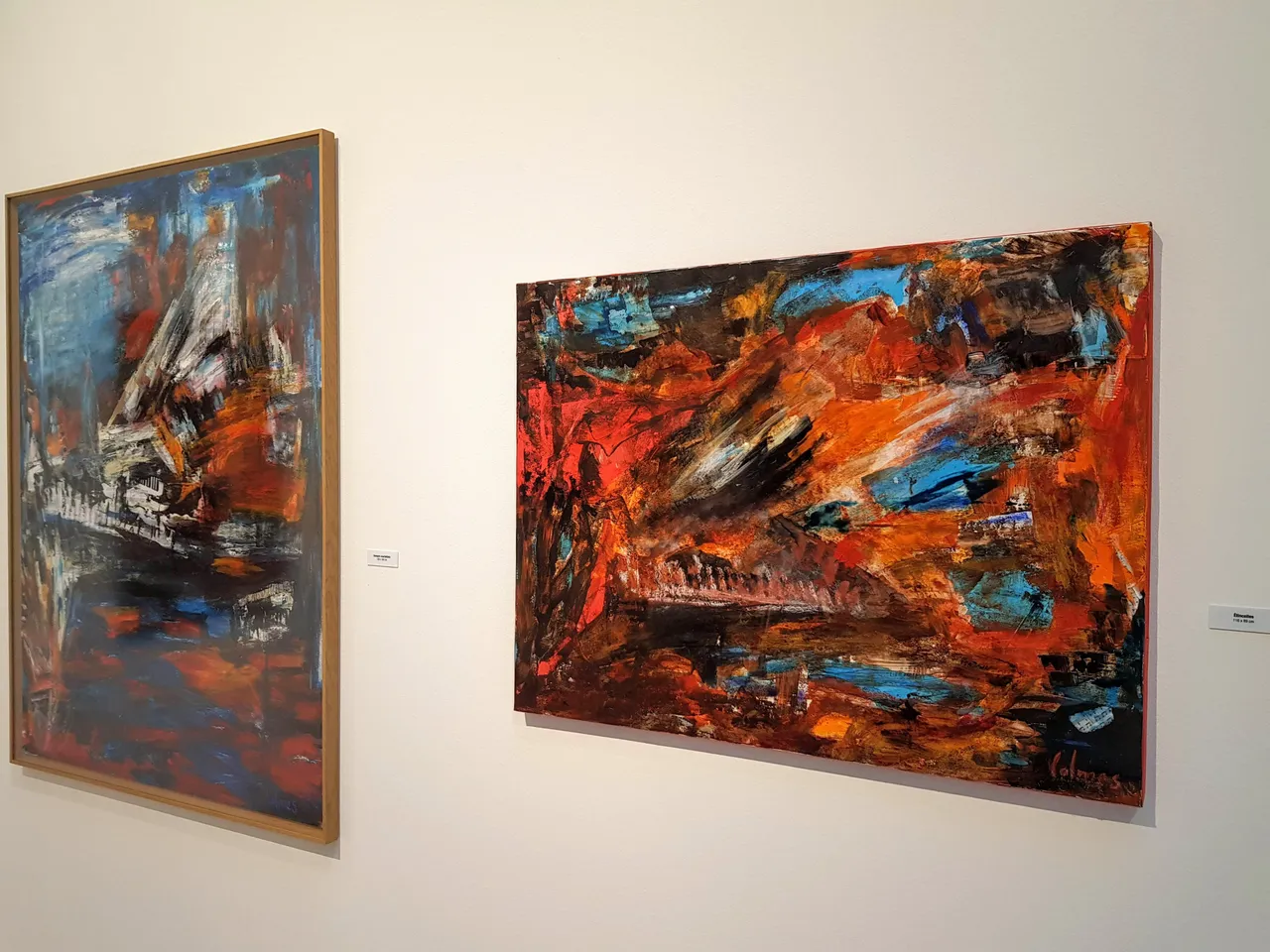
The painting on the left is not for sale, but how much would you say is a fair price for "Etincelles", right, 116 x 89cm?
Price formation
In order to get to a "fair" price for a piece of art, one needs to start from the condition of the artist. If we want to allow as many people with talent and an artistic calling to be able to grace our walls with their creations, these people need to be able to make a decent living out of their art.
Take an artist as Elisabeth Calmes who has a College degree in Arts and has worked at first as Interior Designer. If she is to be able to dedicate herself to her passion, what she earns from painting should not be too far apart from the earnings of an Interior Designer (for a similar volume of work). If an ideal global market doesn't value her production at least that, it would mean she's not talented enough to find appreciation.
Let's imagine she manages to sell everything she can paint in one year (when, as an Interior Designer, she would have put in about 2200 hours of work). The sale of all the artistic productions of 2200 hours of work should cover a decent income, the cost of the materials (canvas, frames, paint, brushes, etc.), the cost of promoting her work (exhibiting, presenting her art). One gets a feeling that from there, there should be a link between the amount of work and a "fair price".

"Verticalité bleue" 1 and 2, 50 x 150cm each on the left wall, "Enflammé" (tryptique), 174 x 198cm on the right wall, guess the prices in "Comments"
Of course work and materials are only part of the story, there's also the value of the talent and creativity, but the former do provide a floor price. That is, if the paintings do not manage to command a price high-enough to at least cover the cost of labor and materials it means by painting the author is in fact destroying value and (s)he should go find some other trade ...
And here's where the ability of blockchain to record, keep track and verify pledges could bring transparency and trust to the art work.
Paying a price for a painting is more than simply acquiring an object - it is implicitly forming an aesthetic bond with the artist. You let his creation, a part of his spirit enter your house, greet you every morning and greet your visitors. Implicitly, the painting becomes a part of "you", of who you are. Are you, or is your house more in harmony with a "Verticalité bleue" or rather with "Enflammé"?
Because of this "bond forming" at purchase time, it is worth considering the possibility of extending that to a prior moment, the moment where the spark of inspiration takes form and the creative impulse morphs into a decision to place a new canvas on the easel, pick the charcoal and start drawing a preliminary sketch that will later turn into a full-fledged painting.
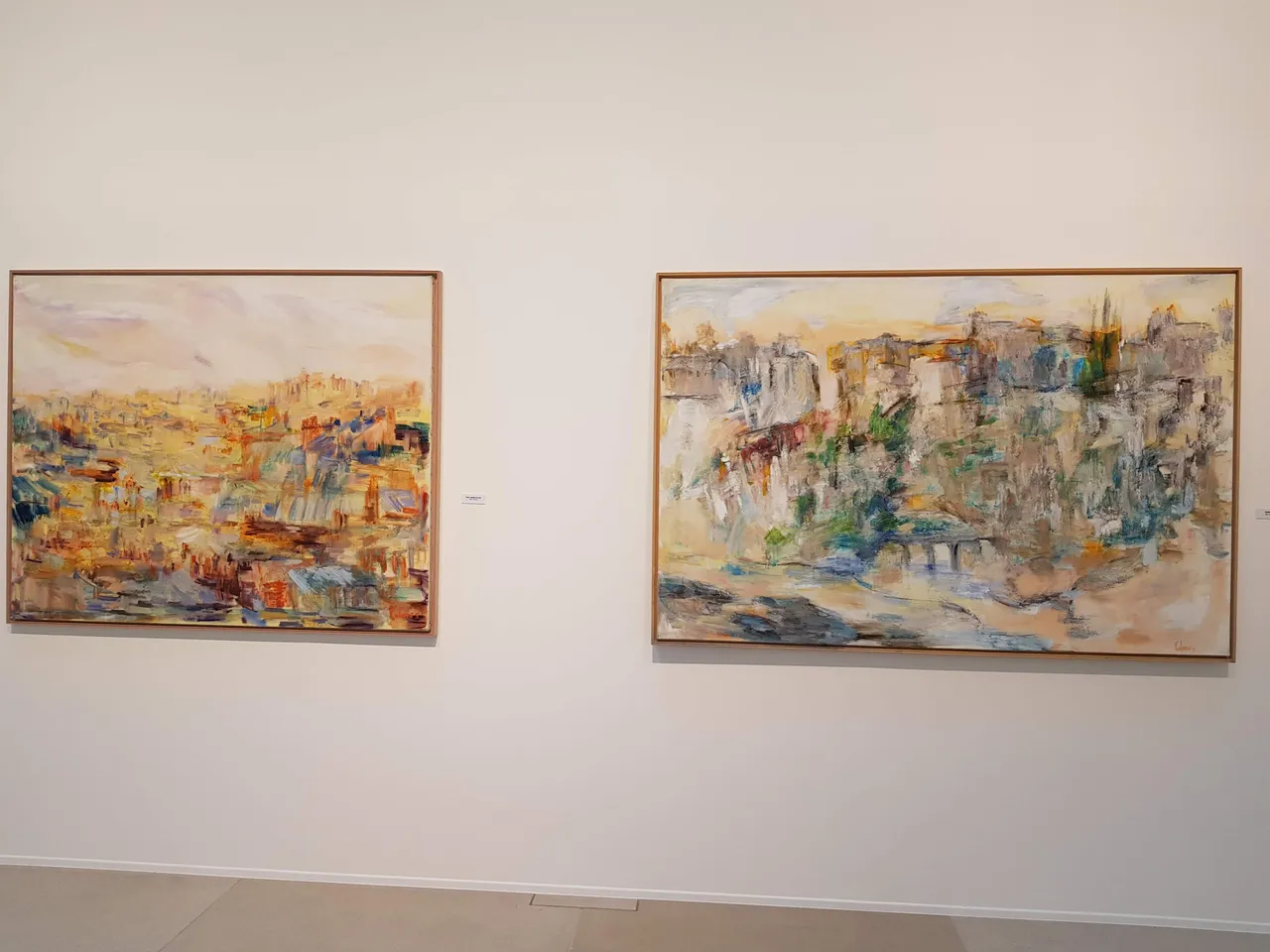
"Paris, lumière du soir" on the left and "Luxembourg, ville majestueuse" on the right
Imagine that moment being posted on the blockchain, and from there on beginning to measure the time elapsed and the progression. If you are able to follow the work and be witness to the meticulous application of several layers of paint in order to obtain a special visual effect, you'd be likely to ascribe more value to a painting than seeing it in its final, polished version hanging on the wall of an exhibition. By virtually "walking alongside the artist" on his path of creation, your bond with the artwork will be stronger and more meaningful.
I posit that accompanying the artist in the creation process, over a period of days, weeks or months will lead you to enjoy the art more and to feel good about paying the artist more. In the end, art is, for the buyer, about feeling good; whereas for the painter, it is also about paying bills.
By treating the work of the artist like that of a coder, a "Utopian for Art" could vouch for the time and somewhat for the work that went into a painting, even if not quite for the cost of materials (unless they are bought from merchants selling brushes, canvas and paint on the steem blockchain too).
A "Utopian for Art" could also link potential buyers with artists and have the buyers pay a "retainer fee" that would remain in escrow or could bankroll the artist during the creation process (the artist needs to eat even before the painting is ready)
Who would take the risk and pay for building that dApp on steem?
Here is where the beauty of the steem economics and its "reward pool" really shine!
Such a Steem dApp would create a unique service offering on Steem and thus increase the demand for the STEEM currency, just like I explained above that the coming of Bitcoin mining farms to Iceland has increased demand for Icelandic Krona and has thus made all Icelanders better off (Icelanders import a lot more than they export, just like inhabitants of Steemland).
It is thus in every Steemian's best interest that such a dApp sees the light of day and becomes successful at attracting artists, art buyers and generating successful transactions that are fair and leave every participant better off.
And because we are looking at code, we already have the mechanisms to fund it, through Utopian, Fundition and Oracle-D
Should we coordinate and cooperate to achieve such a feat? If yes, when, how high should such a project be on the list of priorities? If not, why not?

If you know what witnesses are and agree that people commited to keeping this blockchain ticking play an important role ...

(by simply clicking on the picture - thanks to SteemConnect)

Related posts
- How I learned to stop worrying and love the Bid Bots
- My blockchain memory
- Steem crypto-economics
- Historic evening: first beer paid with SBD in Luxembourg (+ Fr)
Steem ecosystem
- Help Yourself! (steemit for dummies)
- Game Theory 101 - Schelling point or "Why Steemit.com is important"
- Best way to Grow on Steemit
- Turn up the Heat! Steem Luxembourg
- Spammers gonna spam - focus on original content!
- The best time to publish is now
- Steem $10Bln!
- Setting up a new Witness Node!
- Why would anyone burn a bear? - SteemFest 3
- Steemit and the Fractal Society
- Crypto-contradictions
Other posts you might enjoy:
Blockchain, Crypto and Society
- Why NOT buying Bitcoin is completely irrational
- What's Bitcoin's Value?
- How to buy Bitcoin in the Eurozone - Comment acheter du Bitcoin dans la zone euro
- Why Blockchain Is a Revolution
- A New Hope
- Hack Your Life in 3 Easy Steps!
- The Holy Blockchain
- Crazy crypto evening
- Blockchain revolution: Money and Credit
- Small worlds
- The Press needs to be Freed from the Tyranny of Money
- Immigrate to Romania!
- Blockchain in large organizations
- Blockchain revolution: the CIOs' dilemma
- The Heist: How Big Blue stole Blockchain!
- Blockchain Explored - why the industry loves IBM
- Blockchain and the End of the Western Civilization
- De l'argent (Steemit en français, la suite)
- The Church of Bitcoin
- The Ressolid Project
Blockchain and Europe
- Incentive-based regulation - Blockchain opens up a new era of European integration
- EU-citizens-blockchain-in-a-box
- Europe, I love you! - Europe, je t'aime!
- The Blockchain Competence Center (BLKCC)
- European Financial Transparency Gateway
- Toward a pan-EU blockchain infrastructure
- Blockchain and Data Virtualisation
- Blockchain, Credentials and Connected Learning Conference
- Decentralized Learning: The Future of Student Mobility in Europe
- The "war for [steem] blockchain talent" has been engaged - Fujitsu allies with EC
- Blockchain4EU
- Poker Champion Tony G turns MEP Blockchain Champion!
- Virtual Currencies - an EP report July 2018 - Part 1
- Central Bank Digital Currencies - Part 2 of the "Virtual Currencies" EP report of July 2018
- Blockchain taming the Dragon of Corruption
- Sovereign identity on blockchain
- Blockchain and GDPR - a Call to Arms!

You might also want to check out - my “lighthearted” account, @sorin.lite, perhaps you’ll like what you’ll see.
- the Ressolid account
- the Witness account, @lux-witness (and even approve it, perhaps)

